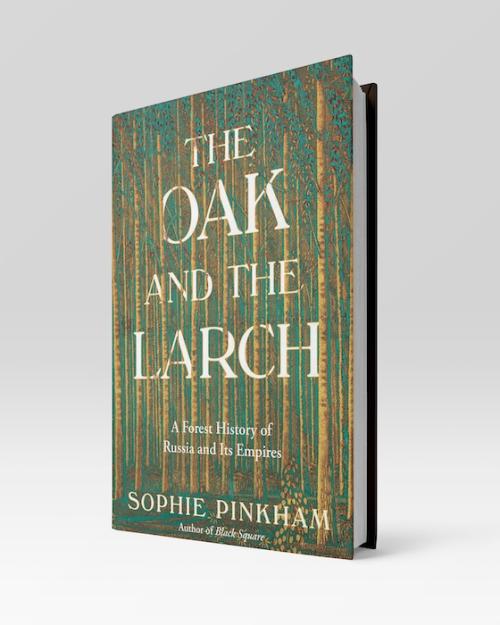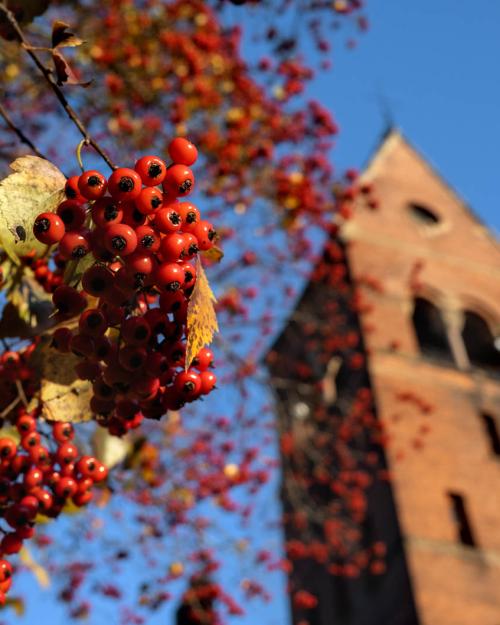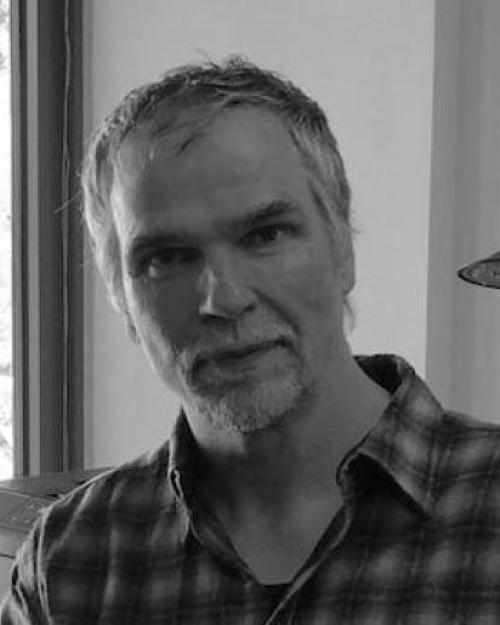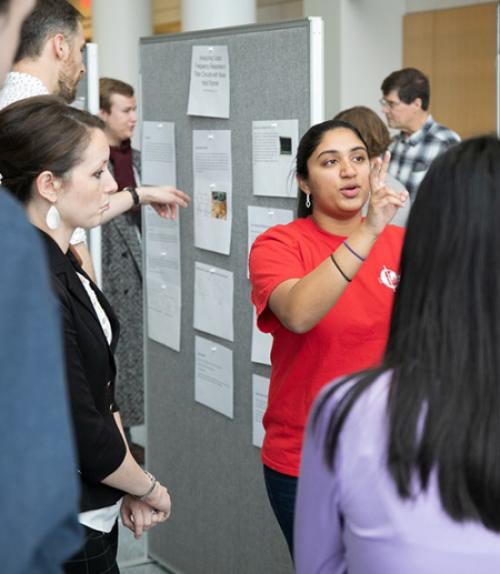Faculty and students participating in a physics lab course redesigned through the Active Learning Initiative (ALI) lauded the experience at the December poster session displaying the students’ final projects. Professors described the students as being engaged and enthusiastic; students said they gained confidence and discovered the pleasure of experimentation.
The Physics 2218 course, with three lab sections and 53 students, began with four weeks of experiments with specified objectives, followed by five weeks of an open-ended project where students built on previous labs by identifying research questions and designing their own experiments. Simulating a real research project, students submitted proposals for projects that were reviewed by the teaching team and gave regular progress reports throughout the semester.
“I was on the fence, unsure how it was going to go,” said professor Andre Leclair, who was asked to teach a lab section and serve on the project committee because he’d taught the course before. “Now I’m quite positive [about it] because the students really liked it and some of them did really impressive stuff with limited equipment. They were all really engaged, making progress every day, discussing ideas among themselves. They weren’t just showing up.”
Physics education researcher Natasha Holmes, who led the faculty committee redesigning the lab course, said the way traditional labs are structured is not really active learning. Research shows that while students may be active with their hands, they’re not really active with their brains.
“Following rote procedures to get a proscribed outcome at the end isn’t doing a whole lot for learning,” said Holmes, assistant professor of physics. “The ways we’re redesigning labs focuses on things like getting students to iterate and try to improve what they’re doing, helping them to recognize that experiments never work the first time, and giving them confidence to keep trying.”
The traditional lab experiments students conducted in the first half of the semester had a twist; they were based on concepts students hadn’t yet covered in class. The goal was for them to explore and think more deeply about the ideas behind the experiments.
“A standard physics lab reinforces the content in the lecture. We’re switching the learning goal to reflection and iteration,” said Emily Smith, a postdoctoral associate for the ALI. “It’s about students and how we can improve their attitude about physics and … show them science is a creative process.”
During the second five weeks of the semester, students had to think through their projects on their own. “I was told to be hands off as much as possible, to let them make their own mistakes,” Leclair said. “It’s a little more like the scientific process really is. It’s not going to work the first time. In a regular lab [course], it always works the first time.”
Isha Anantpurkar ’21, who worked on “Modeling Optic Properties of a Polaroid Filter,” said: “In a usual lab, we follow the steps we’re given. In this lab, we designed it ourselves. It definitely made me more interested in this kind of lab.”
One final, perhaps unplanned benefit accrued from the redesign of the lab course: “I definitely made more friends because we had to collaborate,” said Jiaruo Li ’21.
This story also appeared in the Cornell Chronicle.




